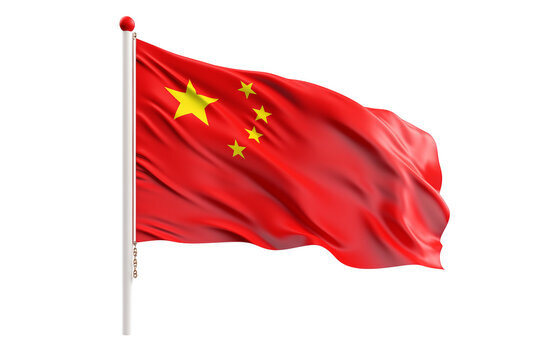China’s Belt and Road Initiative: The art of exploiting threats and opportunities

TEHRAN- Since its launch in 2013, the Belt and Road Initiative (BRI) has encountered numerous challenges and developments. Nevertheless, the initiative continues to be one of the most important strategies of the People’s Republic of China.
The following sections briefly explain how China has established the BRI despite all the transformations it has gone through.
The Green Silk Road
One of the most significant criticisms of the BRI since its inception has been the inadequate attention given to environmental standards in its projects. Furthermore, the Paris Agreement has compelled China to adopt a more responsible approach to climate change. In addition, the surge in fossil fuel prices, driven by increased demand following the reopening after the Covid-19 pandemic, coupled with heightened geopolitical risks stemming from Russia’s invasion of Ukraine, has increased the need to enhance energy efficiency and diversify the energy portfolio, with a particular focus on renewable energy sources. On the other hand, many BRI countries face substantial challenges in sustainable development, creating a considerable market for Chinese goods and services related to the green economy. Such factors have prompted Chinese policymakers to prioritize a green and sustainable BRI, leading to the Green Silk Road (GSR).
The Health Silk Road
Although the history of the Health Silk Road (HSR) dates back to 2015, the COVID-19 pandemic has significantly elevated its importance within the BRI for several reasons. On one hand, COVID-19 restrictions, such as lockdowns and travel bans, have in different ways led to the suspension, slowdown, or permanent cessation of various BRI infrastructure projects. For instance, these restrictions disrupted global supply chains, resulting in increased costs for such projects. Additionally, the financial burden imposed by the COVID-19 pandemic compelled many BRI countries to reassess their budgets and prioritize healthcare expenditures. On the other hand, the COVID-19 pandemic also presented China with opportunities for medical innovations, pharmaceutical and medical exports, vaccine diplomacy, collaboration among healthcare experts abroad, and the construction of medical facilities. Furthermore, in response to criticism regarding its management of the COVID-19 outbreak, China sought to position itself as a responsible member of the international community. Despite the end of the pandemic, HSR has emerged as a framework for extensive cooperation and exchanges among BRI countries in the healthcare sector.
The Digital Silk Road
Like HSR, the history of the Digital Silk Road (DSR) dates back to 2015. However, various developments in recent years, such as the COVID-19 pandemic, the rapid growth of the digital economy, increasing technology-related tensions between the United States and China, and global geopolitical developments have made the DSR increasingly important to Chinese policymakers. Similar to the aforementioned initiatives, China has adeptly turned many threats into opportunities and successfully exploited the opportunities as well. For instance, although COVID-19 restrictions have hindered the progress of BRI infrastructure projects, China has leveraged the surge in demand for digital services and goods domestically and internationally during the pandemic to develop its digital economy. Additionally, China has turned U.S. technology-based threats into a catalyst for enhancing its technological independence from the United States and other global tech leaders. It’s worth mentioning that the DSR, which aims to improve digital connectivity, encompasses various sectors, including digital infrastructure (such as 4G/5G wireless communications, broadband, subsea cables, satellite systems, cloud computing, and surveillance systems), smart cities, and cross-border e-commerce.
The Polar Silk Road
The Polar Silk Road (PSR) refers to Arctic shipping routes that connect North America, East Asia, and Western Europe through the Arctic Circle. Historically, the presence of the extensive amount of sea ice made shipping through the Arctic Circle challenging. However, the melting of sea ice due to global warming has increasingly opened up shipping opportunities in this region. This development could provide shorter and potentially cheaper more cost-effective shipping routes compared to existing or alternative routes between major markets. Another goal of the PSR is to facilitate the exploitation of minerals, fossil fuels, and other non-living resources in the Arctic. Although the Russo-Ukrainian War began in 2014, following Russia's annexation of Crimea and the imposition of sanctions against Russia have hindered the advancement of the BRI, particularly through the China-Mongolia-Russia Economic Corridor and the New Eurasia Land Bridge Economic Corridor, Russia’s increasing economic dependence on China has provided the latter with greater latitude to expand its activities in the Arctic. Furthermore, Russia’s invasion of Ukraine in 2022 and the resulting escalation of sanctions against Russia have exacerbated this dual effect.
New evolution?
BRI aims to increase the utilization of China’s excess installed capacity, expand markets for Chinese products, facilitate Chinese access to raw materials, enhance China’s technological capabilities, and thereby, rebalance its economy while expanding its global influence. The primary objectives of the BRI were to establish the land-based Silk Road Economic Belt and the sea-based 21st Century Maritime Silk Road. However, DSR, GSR, and HSR have increasingly gained significance within the BRI in response to various challenges and to capitalize on emerging threats and opportunities. It is important to note that geopolitical developments such as the withdrawal of the United States from Afghanistan, the collapse of the Islamic Republic of Afghanistan, and the re-establishment of the Islamic Emirate of Afghanistan under Taliban control in this country, along with the Russo-Ukrainian war, have posed significant challenges to the initial BRI. In this context, the aforementioned minor initiatives have not only sustained the major initiative (i.e. the BRI), but have also transformed it into something quite different from its original form. It remains to be seen whether new geopolitical developments, such as the recently announced plans by the US President to annex Canada and Greenland to this country, along with US control of the Panama Canal, will lead to a new evolution of the BRI.
“The opinions presented in the article belong to the author and do not necessarily represent the views of the Tehran Times.”
Leave a Comment